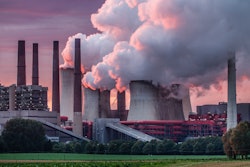
A new national-scale, multisector EPA report reports on the ways children are especially vulnerable to a variety of health effects from climate change due to physical, cognitive, behavioral and social factors.
This peer-reviewed report quantifies projected health effects associated with extreme heat, air quality, changing seasons, flooding and infectious diseases. Where possible, the analyses consider the extent to which health effects disproportionately fall on children who are Black, Indigenous and people of color, low income, without health insurance and/or have limited English proficiency.
The report finds a number of impacts to U.S. children’s health and well-being. For example, at 2°C and 4°C of global warming:
- Climate change is expected to increase the incidence of asthma in children. Specifically, climate-driven changes in air quality are estimated to increase annual cases of asthma between 4% and 11%, respectively.
- Increases in oak, birch and grass pollen are projected to increase children’s asthma-related emergency department visits from 17%-30% each year.
- Additional cases of Lyme disease in children are projected to rise 79% to 241%, or an additional 2,600 to 23,400 new cases per year.
- Heat experienced during the school year affects concentration and learning in children. Climate-driven temperature increases are projected to result in 4% to 7% reductions in annual academic achievement per child. These learning losses can affect future income, with potential losses across cohorts of graduating students reaching billions of dollars annually (and in the thousands of dollars per individual).
- If no additional adaptation actions are taken, 1 million to 2 million+ children are estimated to experience temporary home displacement or complete home loss, respectively, from coastal flooding at 50cm to 100cm of global mean sea level.




















